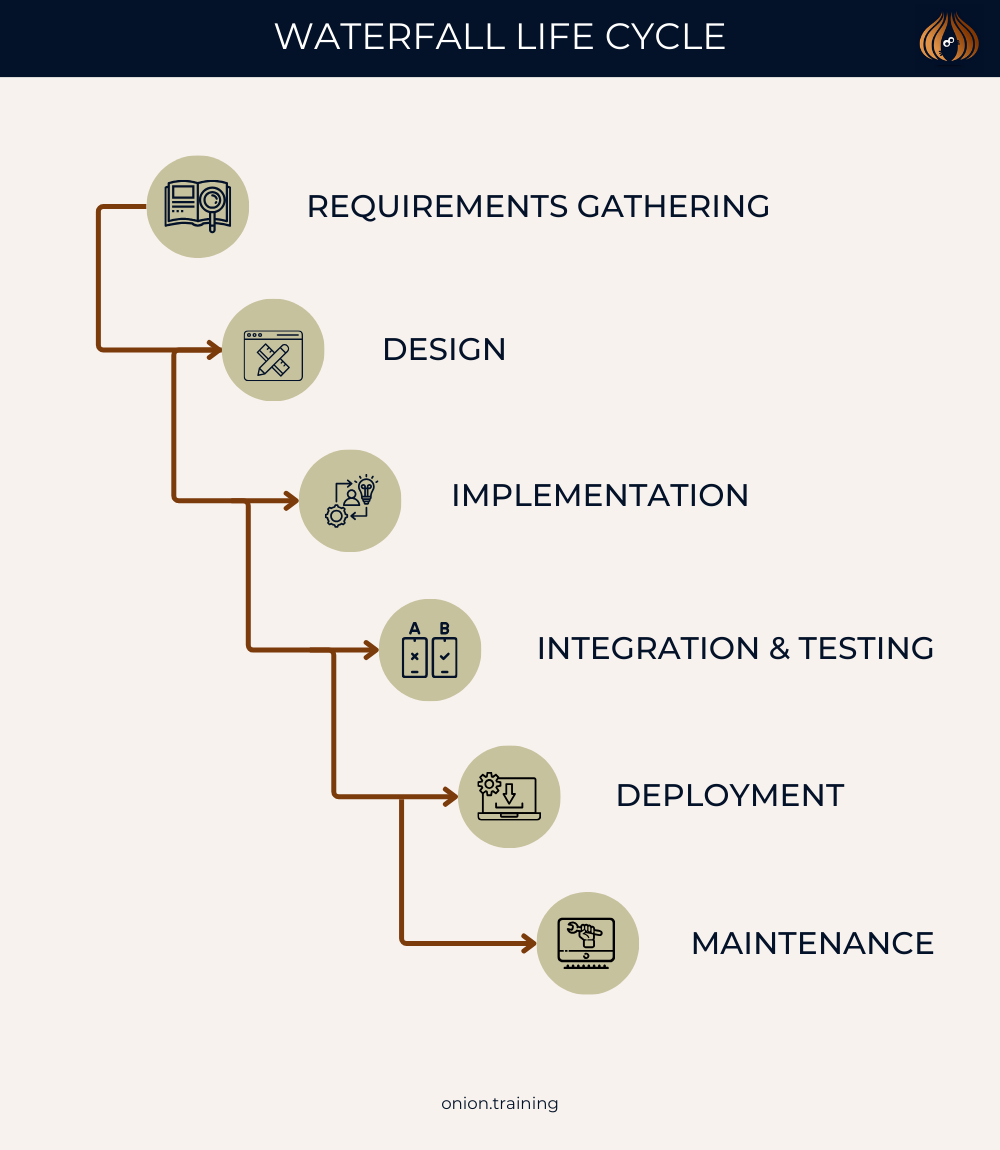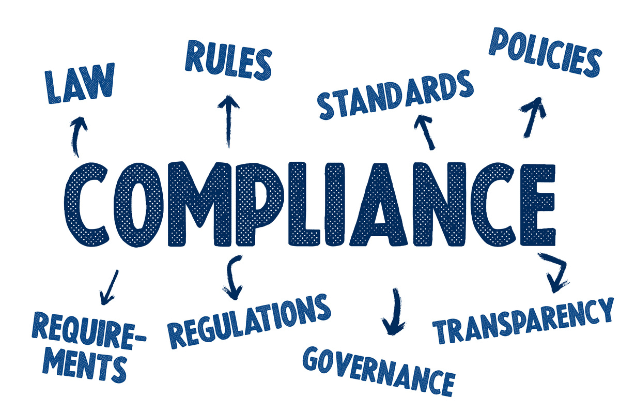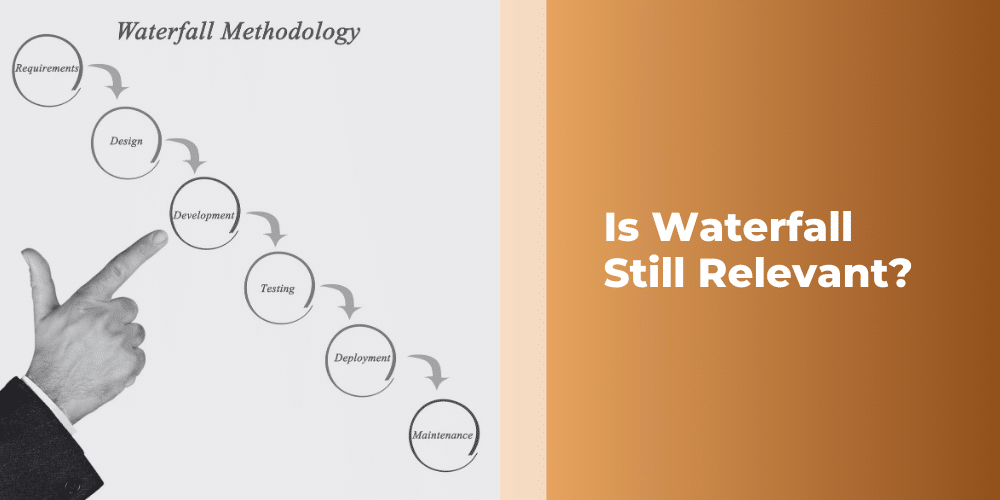In the world of software development, things are always changing and evolving. New methodologies pop up all the time to help manage projects effectively. One methodology that has been around for five decades is the Waterfall Methodology. It’s a linear and sequential approach that we’re going to explore in this blog post, specifically in the context of software testing.
Here we’ll discuss why it’s useful, when it’s best to use it and how it fits into today’s fast-paced development landscape.
Table Of Contents
Understanding the Waterfall Methodology
The Waterfall methodology is the most traditional model in software development, created by Winston W. Royce. It is a project management method which breaks down all project activities into linear sequential phases, where each phase depends on the deliverables of the previous one and corresponds to a task. It’s all about following a specific sequence of phases, such as requirements gathering, design, implementation, testing, deployment and maintenance. Each phase is completed before moving on to the next one, with minimal overlap or iteration. While Agile methodologies have gained popularity, the Waterfall methodology still has its place in specific contexts.

Uses of the Waterfall Methodology in Software Testing
Well-Defined and Stable Requirements: it’s highly effective when working with projects that have clear and stable software requirements. Its linear nature allows for meticulous planning and execution of tests based on specific and well-documented requirements.
Small to Medium-Sized Projects: The Waterfall approach is well-suited for small to medium-sized projects with limited scope. Its structured and sequential nature provides better control over timelines, resources and deliverables, facilitating efficient testing effort estimation and management.

Regulatory Compliance: Industries with strict regulatory compliance requirements, such as healthcare and finance, can benefit from the Waterfall methodology. Its focus on comprehensive documentation and linear progression aligns well with the need for traceability and auditability.
Established and Stable Technology Stack: The Waterfall model provides a structured framework for testing when working with well-established and stable technology stacks. It allows for comprehensive test planning and meticulous verification of the system against predefined criteria.
Relevance of the Waterfall Methodology Today
While Agile methodologies have revolutionised software development, the Waterfall methodology still remains relevant in certain scenarios. For instance, organisations maintaining legacy systems built using the Waterfall approach need to continue following the Waterfall methodology for testing and maintenance to ensure compatibility and stability.
Additionally, industries such as government, finance and healthcare often require strict compliance with regulations. The Waterfall methodology’s emphasis on documentation and traceability supports the need to demonstrate compliance and adhere to regulatory standards.
Moreover, projects governed by fixed-price contracts benefit from the Waterfall methodology, as it provides a clear structure for defining deliverables, milestones and acceptance criteria, helping manage expectations and meet contractual obligations.
Lastly, even mature products in the maintenance phase can still benefit from the Waterfall methodology. With well-established requirements, the focus shifts to bug fixes and enhancements, making the linear progression of Waterfall suitable for systematic testing.
Best Practices for Implementing the Waterfall Methodology
To guarantee successful implementation of the Waterfall methodology in software testing, there are some best practices to consider.
- First and foremost, invest significant effort in thorough requirements gathering. Gathering and documenting requirements upfront ensures clarity and minimises changes during later stages of the project.
- Next, develop a comprehensive test plan that covers all relevant test scenarios, objectives and acceptance criteria. Align the test plan with project requirements and timelines. Focus on early defect detection, as testing occurs in a later phase. Conduct thorough reviews and inspections of design and requirements documentation to identify potential issues before entering the testing phase.
- Establishing clear communication channels between the testing team, development team and stakeholders ensures a shared understanding of requirements, test objectives and progress updates. Regular communication ensures that everyone is aligned and can address any issues or concerns promptly.
- Maintain detailed documentation throughout the testing process to provide transparency and traceability. Document test plans, test cases, test results and any deviations or issues encountered during testing. This documentation serves as a valuable reference for future maintenance and troubleshooting.
- Implement a robust change management process to handle necessary changes or modifications to requirements during the project. Ensure changes are well-documented, approved and communicated to all relevant stakeholders. This helps maintain project integrity and prevents scope creep.
- Allocate sufficient resources, including skilled testers, test environments and testing tools, to carry out comprehensive testing activities. Proper resource management ensures that testing tasks are executed effectively and within the planned timelines.
- During test execution, diligently follow the test plan and capture all relevant test results. Analyse and report the findings, including defects and issues discovered during testing. This information enables stakeholders to make informed decisions and take appropriate actions. Conduct post-implementation reviews to evaluate the effectiveness of the Waterfall methodology in the specific project context. Identify areas for improvement and incorporate lessons learned into future projects to enhance efficiency and effectiveness.
While Agile methodologies have gained prominence, the Waterfall methodology remains relevant in specific settings. Its structured and sequential nature suits projects with well-defined requirements, limited scope, stable technology stacks and regulatory compliance needs. By implementing best practices, such as thorough requirements gathering, effective communication and rigorous documentation, teams can successfully utilise the Waterfall methodology in software testing projects.
Interested in delving deeper into software methodologies? Check out our software testing course, where we explore this topic and a whole lot more.
Related Articles
Become A Quality Assurance Tester: 5 Must-Know Tips
16 Undeniable Reasons Why AI in Software Testing Cannot and Will Not Replace Software Testers

